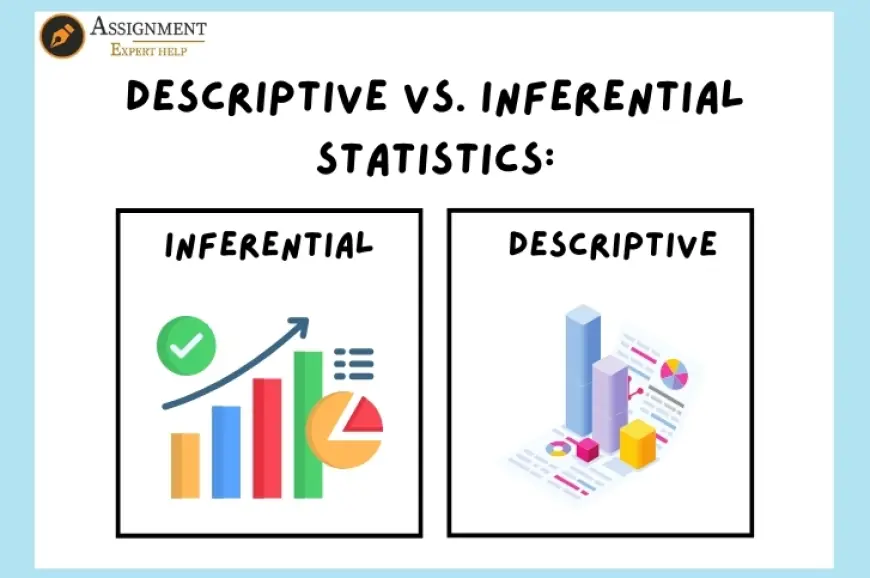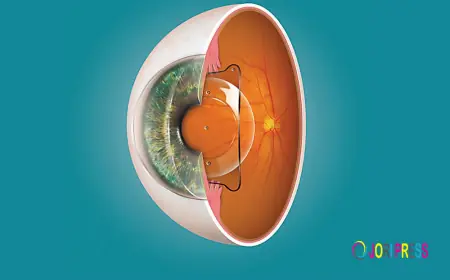Descriptive vs. Inferential Statistics: What’s the Difference?
Learn how descriptive statistics summarise data versus how inferential statistics make predictions. Explore practical examples and tools used in each branch.

You've undoubtedly heard of descriptive and inferential data, whether you're reading for your GCSEs or A-levels or are simply beginning your college education. They might also seem like complicated ideas at everything; however, when you break them down, they may be quite simple and very useful in real studies and information evaluation.
We'll go over the definitions of every kind of statistic, their differences, and applicable packages in day-to-day coursework and future employment in this blog post, offering insights valuable for anyone seeking academic writing help.
What is Statistics?
Let's take a moment to review the 2 kinds earlier than we speak of them. The discipline of mathematics called 'records' is concerned with accumulating, analysing, deciphering, supplying, and arranging facts. Put more simply, it is the system by which human beings interpret large amounts of information.
Now, there are two main branches of statistics:
-
Descriptive Statistics
-
Inferential Statistics
Let's examine each in more detail.
1. Descriptive Statistics: Explain Your Data
Descriptive facts are all about characterising the statistics you have already accumulated, as the name implies. It doesn't try to forecast or move beyond those facts. Rather, it gives a concise, comprehensible précis of the facts' findings.
What is included in Descriptive Statistics?
The following are examples of descriptive statistics:
-
Averages (Mean, Median, and Mode)
These let you know of a fact set's "standard" value. The implication, as an instance, is probably 10 hours if you polled one hundred students about how much time they spend analysing every week.
-
Standard Deviation and Range
This indicates the degree of dispersion of the information. Does each person spend about ten hours analysing, or do a few spend a little and others twenty?
-
Frequency Distributions
This shows the frequency of each value. For instance, you can word it that almost all college students spend 8 to 12 hours reading.
-
Graphs and charts
Consider box plots, histograms, pie charts, and bar charts. All of these technologies are used to describe statistics visually.
Examples of Descriptive Statistics
Suppose you asked 30 college students what number of cups of tea they drank each day. After compiling all the responses, you computed:
-
Mean = 3 cups
-
Median = 2 cups
-
Mode = 2 cups
-
Range = 0 to 8 cups
-
Standard deviation = 1.5
A bar chart that shows the number of scholars who drink 0, 1, 2,... Up to eight cups may additionally be made.
Descriptive data is what this is. You're simply describing what your data shows; you're not speculating or forecasting.
2. Inferential Statistics: Forecasting and Determining Results
Conversely, inferential statistics takes matters a step further. You use the facts you have amassed to create inferences or predictions about a broader populace as opposed to merely summarising it.
What Are the Functions of Inferential Statistics?
You can benefit from inferential statistics by:
-
Calculate a population's common time to study (for example, the average observed time of all UK students, based on a sample).
-
Hypotheses must be tested, including "Do students who drink coffee study longer than folks who don’t?"
-
Look for correlations among variables, including the connection between exam rankings and observed hours.
-
Check to see if the results are statistically significant or if they are possibly the result of chance.
Typical Inferential Tools
Frequently, inferential statistics entail:
-
Z-tests and T-tests
Used to evaluate the significance of variations between two agencies.
-
Chi-squared tests
Regularly hired to determine whether two classes—such as gender and tea versus coffee desire—are related.
-
Regression Analysis
Aids in forecasting values, along with the potential development in a scholar's grade based on the number of hours spent revising.
-
Confidence Intervals
These offer a selection, frequently 95 per cent, within which you can assume the real number to fall.
-
P-values
Suggest the probability that your outcome becomes the result of hazard. A p-value that is tiny, generally less than 0.05, suggests that the outcome might be large.
Examples of Inferential Statistics
Imagine you survey a hundred college students from universities throughout England and find that the common scholar spends 12 hours a week on independent study. You need to realise if that holds for all UK college students (greater than 2 million of them!).
Inferential information was used to estimate that the average look-at time for all UK college students is likely between 11.5 and 12.5 hours per week, as it is not possible to interview every scholar.
You might also study whether London college students study it much more than Manchester students. You should logically conclude that the difference is a good size and no longer simply a twist of fate if your evaluation yields a low p-value.
Primary Differences Between Descriptive and Inferential Analysis?
In undeniable language, let's examine the principal distinctions between descriptive and inferential data.
-
Goal:
The information you have collected can be summarised or described using descriptive records. Conversely, inferential records are used to forecast or infer data about a broader population from a sample of statistics.
-
Information Used:
All of the facts you've accumulated can be used with descriptive information. A sample, which is a smaller subset of the full population, is used in inferential statistics.
-
Result:
Giving a clean photo of what's happening in the records is the intention of descriptive information. The goal of inferential facts is to extrapolate conclusions or generalisations about a bigger population from the records.
-
Tools:
Mean, median, mode, and different charts or graphs are frequently employed tools in descriptive statistics. Hypothesis assessments, confidence periods, and other techniques are utilised in inferential statistics to analyse relationships and make inferences.
-
Focus:
The information that is in front of you is the primary emphasis of descriptive facts. Inferential information: Use your sample statistics to generate knowledgeable estimates about the populace you don't have access to without delay.
Consider it this way:
-
Descriptive: "This is what we observed."
-
Inferential: "Here is what we believe to be true more generally based on what we observed."
Why Is This Important to UK Students?
Comprehending the differences among those classes of data isn't restricted to exam fulfillment. It allows you to recollect the material you notice on an everyday basis—from news reports to clinical studies—with greater rigour.
For example:
-
A research study found that the most probable employed inferential statistics based on a survey pattern when it states, "The majority of younger people in the UK support climate action."
-
Descriptive data are used while your instructor displays the average exam rating in your class.
Being in a position to differentiate between describing information and drawing conclusions from it can fortify your analysis and make your arguments more compelling, whether you're operating in your EPQ, a science venture for college, or a psychology task for university.
Common Errors to Steer Clear of
The following are some common misconceptions among UK students:
-
Making Bold Assertions With A Tiny, Skewed Sample
Only when your pattern, as it should be, is displayed can the bigger institution's inferential facts be used. Your findings might not be relevant to the entire school or population if you simply poll your friends.
-
Confusion Between Cause and Correlation
The mere reality that things are related (as an example, consuming breakfast increases grades) does not suggest that one causes the other.
-
Disregarding Variability
Two groups can have identical averages but entirely distinct spreads (standard deviations or ranges). That counts!
Wrapping It Up
Although they're separate and equally massive, they make use of both descriptive and inferential statistics, which are sturdy contraptions. While inferential information enables you to move beyond descriptive records and make a full statement about the broader photo, descriptive statistics assist you in understanding what your information says.
Gaining talent in those two areas of data will assist you to be more confident and improve your marks as a UK pupil working on assignments, surveys, or research initiatives.
Therefore, the next time someone affords you facts, recall if they're simply summarising the facts or trying to draw a bigger conclusion. More than any textbook, that question alone can help you develop your critical thinking skills—something that’s incredibly useful when seeking academic help.
What's Your Reaction?
 Like
0
Like
0
 Dislike
0
Dislike
0
 Love
0
Love
0
 Funny
0
Funny
0
 Angry
0
Angry
0
 Sad
0
Sad
0
 Wow
0
Wow
0


















































